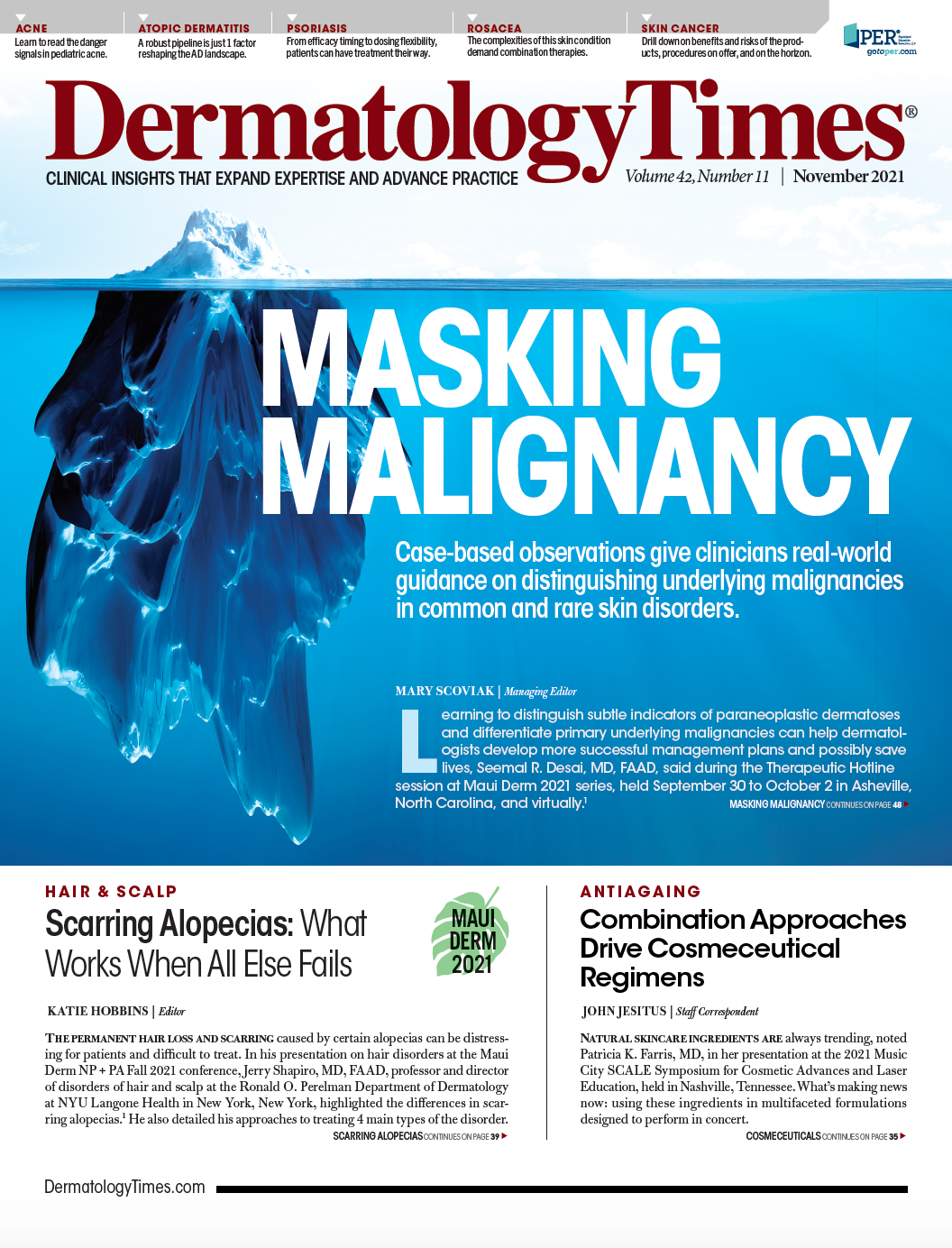- Case-Based Roundtable
- General Dermatology
- Eczema
- Chronic Hand Eczema
- Alopecia
- Aesthetics
- Vitiligo
- COVID-19
- Actinic Keratosis
- Precision Medicine and Biologics
- Rare Disease
- Wound Care
- Rosacea
- Psoriasis
- Psoriatic Arthritis
- Atopic Dermatitis
- Melasma
- NP and PA
- Skin Cancer
- Hidradenitis Suppurativa
- Drug Watch
- Pigmentary Disorders
- Acne
- Pediatric Dermatology
- Practice Management
- Prurigo Nodularis
- Buy-and-Bill
Publication
Article
Dermatology Times
If Approved, Cantharidin 0.7% Could be Standard of Molluscum Care
Author(s):
Cantharidin 0.7% could be an emerging standard for molluscum treatment.
Phase 3 studies show efficacy and good tolerance of a drug–device combination containing cantharidin 0.7% (VP-102; Verrica) used to treat molluscum contagiosum.
VP-102 eliminates most challenges associated with treating molluscum with cantharidin, according to VP-102 study author Lawrence Eichenfield, MD, who presented data on the topical at the Fall Clinical Dermatology conference held October 21-24, in Las Vegas, Nevada.1,2
If FDA approved, VP-102 could be an emerging standard for molluscum treatment, which currently lacks a standard of care, according to Eichenfield, who is chief of pediatric and adolescent dermatology at Rady Children's Hospital-San Diego and professor of dermatology and pediatrics and vice-chair of the Department of Dermatology at University of California San Diego School of Medicine, both in California.
“Recent Cochrane reviews looking at treatment of molluscum contagiosum concluded, ‘No single intervention has been shown to be convincingly effective in the treatment of molluscum contagiosum,’” Eichenfield said. “Most of the evidence was low quality, other than the well-done studies showing that imiquimod worked no better than vehicle.”
VP-102 offers standardization of cantharidin in unit dose vials, allowing direct, controlled application on molluscum, with stable concentration and good shelf life, Eichenfield said.
“An FDA approved multi-lesion, single use cantharidin product could increase the ease and consistency of treating with cantharidin, and the strong evidence in controlled trials should help establish this as a useful and, hopefully, accessible product,” he said.
Dermatologists Use a Mixture of Approaches with Limited Success
Dermatologists, pediatricians, and other providers use a mixture of approaches today.
“Some don’t treat, some use liquid nitrogen, some use topical retinoids, many use imiquimod—even though the studies were negative on its utility—a few do curettage, and others use other methodologies without a good evidence basis for their effectiveness,” he said. “Cantharidin has been difficult to get for many dermatologists, given that compounded products do not have specific approval by the FDA, and compounded products do not appear to have consistent concentrations over time and ‘multiple dips’ into the bottle create risks of contamination.”
Application of cantharidin with a cotton swab or other applicator can be intimidating for dermatologists and patients. The dosage is hard to control, which sometimes can cause severe blistering, pigment changes, and even scarring, according to Neal Bhatia MD, director of clinical dermatology at Therapeutics Clinical Research in San Diego, California, who presented at Fall Clinical with Eichenfield but focused on molluscum pathogenesis and the efficacy of current treatments.
“The applicator and delivery system of the cantharidin 0.7% is very precise and is easier to apply,” Bhatia said. “This will be useful for treating both children and adults.” While many believe that molluscum can resolve on its own, Bhatia said it often does not and can “spread like wildfire.”
Since molluscum tends to occur in patches, or groups, imiquimod cream treatment is likely to cause local skin reactions and flare-ups in patients who have atopic dermatitis. Commonly used treatment is sinecatechins 15% ointment (Veregen) and while it’s effective, the treatment can be slow acting, taking about 4 months to heal molluscum.
“There is anecdotal evidence for the combination of curettage and imiquimod. What is interesting about molluscum is if you scrape it off, it tends to go away, but it can be painful and can leave scars,” he said.
If it becomes commercially available, cantharidin 0.7% would likely become dermatologists’ go-to therapy, taking place of the older cantharidin treatment approaches and could reduce the use of liquid nitrogen, according to Bhatia.
Disclosures:
Eichenfield has served as an investigator, consultant, and member of the board of directors for Verrica.
Bhatia has served as an investigator and consultant for Verrica.
References:
- Eichenfield L, Bhatia N. Molluscum: has this unmet need found a standard of care? Fall Clinical Dermatology Conference; October 21-24, 2021; Las Vegas, Nevada and virtual.
- Safety and efficacy of vp-102 (Cantharidin, 0.7% w/v) in molluscum contagiosum by body region: post hoc pooled analyses from two phase iii randomized trials. J Clin Aesthet Dermatol. 2021;14(10):42–47






